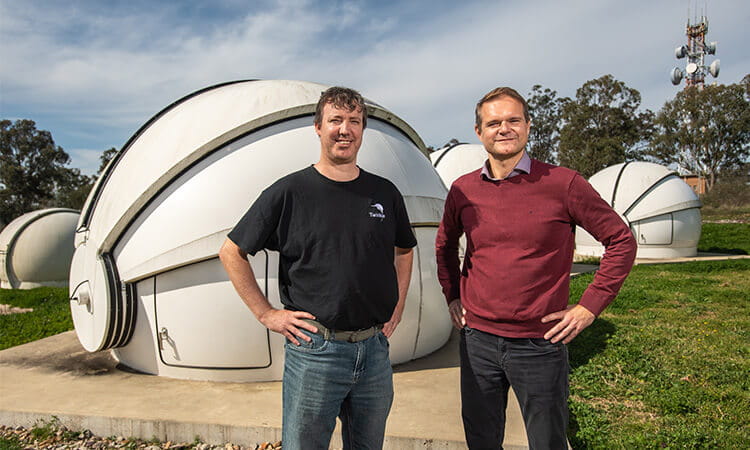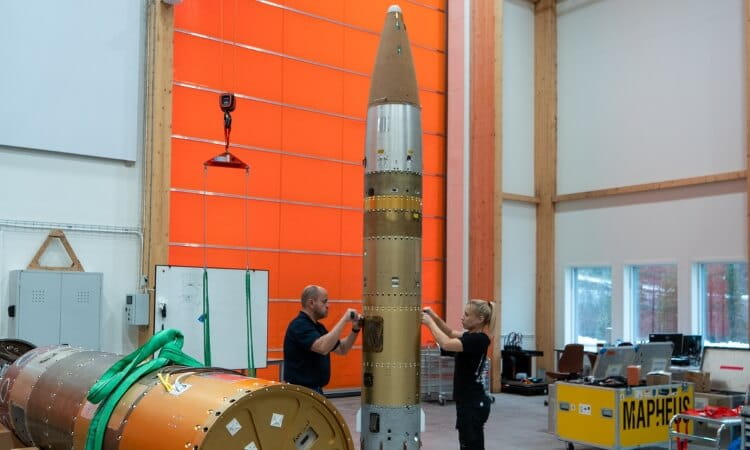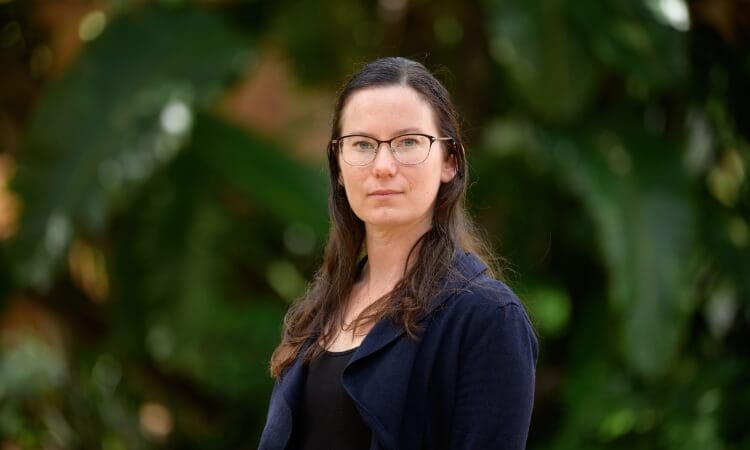Amongst the multitude of astronomical instruments at the University of Southern Queensland’s Mount Kent Observatory, one telescope has a unique mission – to be the eye on the sky for students in Denmark.
The Fjernstyrede UndervisningsTeleskop (FUT) is a remote-controlled telescope dedicated to teaching, allowing astronomy students in Denmark to observe the southern hemisphere night sky in real time during their daytime classes.
The project is spearheaded by Aarhus University thanks to funding from the Novo Nordisk Foundation.
Aarhus University’s Karsten Brogaard recently travelled to Australia to visit the University of Southern Queensland’s Centre for Astrophysics for some hands-on work with FUT, recording 360 degree videos of the site to offer students an interactive Virtual Reality visit.
“It’s an exciting opportunity for Danish students to remotely control a professional telescope from their own high school and observe the otherwise inaccessible southern sky,” he said.
Mount Kent Observatory is Queensland’s only professional astronomical research facility, home to a range of telescopes dedicated to numerous projects.
It provides key specialised support role for NASA’s Transiting Exoplanet Survey Satellite (TESS) mission with the MINERVA-Australis telescope array and hosts the Australian node of the global Stellar Observations Network Group (SONG), as well as enjoys the longstanding Shared Skies Partnership with researchers in the United States of America.
Associate Professor (Astrophysics) Duncan Wright said FUT is a great example of an initiative focused on outreach and engagement, allowing those international students to make their own astronomical observations of the night sky as seen from Australia.
“The FUT telescope at Mount Kent is the first step in a collaboration which also aims to install a reciprocal telescope in Denmark,” Associate Professor Wright said.
“A telescope in Denmark would give Queensland school students the opportunity to observe the northern hemisphere skies from their science classrooms.
“We at the Centre for Astrophysics are excited to be part of this hands-on science initiative, helping to inspire a new generation of star gazers around the world.”
Learn more about the University of Southern Queensland’s Centre for Astrophysics.



